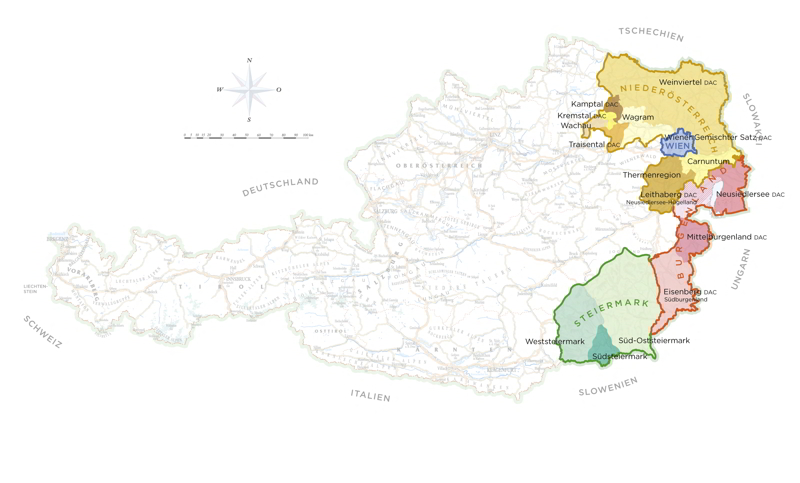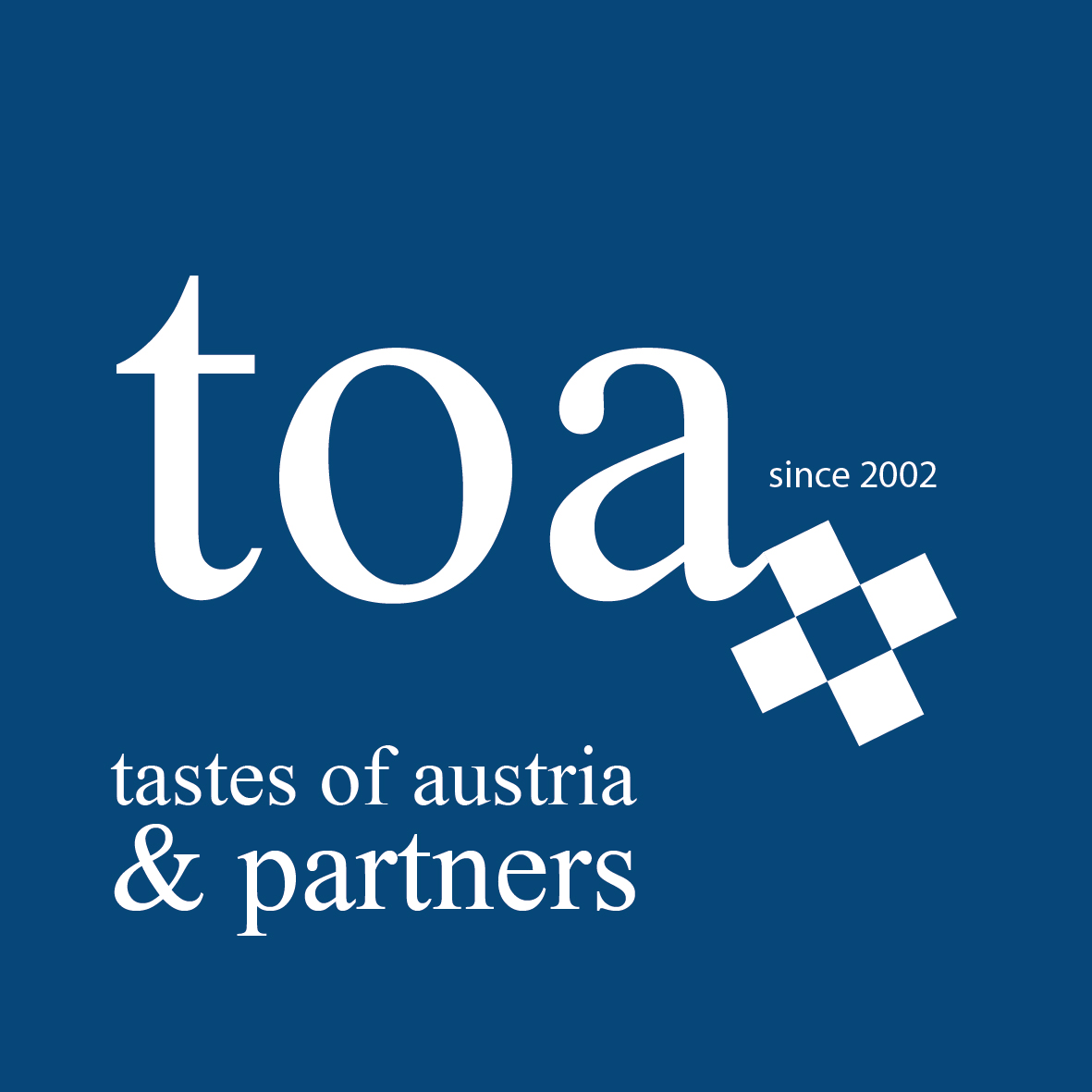Austria's Wine-growing Areas and Regions

Austria’s Wine-growing Areas and Regions For the first time since Austria’s entry to the European Union, Austria was required by the Regulation (ECC) No. 357/79 of the Council of the European Community to conduct a survey of the area under vines with a reference date of 31 August 1999. Also for the first time, data from the existing viticultural land registers of the wine-producing provinces – Burgenland, Niederösterreich (Lower Austria), Steiermark (Styria) and Wien (Vienna) – were included and analysed as secondary statistics. The Austrian Central Statistical Office obtained the data of the other provinces by conducting a written survey of the vineyard owners.
Austria was determined to have a vineyard area of approximately 48,500 ha. This was about 8,400 ha less than in 1992 at the time of the last vineyard survey, which was conducted as a primary census. The area devoted to white wines had fallen since 1992 by around 17.1% to 36,140 ha; there was a smaller decline in the area devoted to red wine, which fell by 7.3% to 12,350 ha. Among the reasons for the decrease in vineyard area were vine removal in accordance with EU vine pulling schemes and national reserve campaigns as well as losses due to frost damage.
The 1999 amendment to the Wine Law created a new wine-growing region called “Weinland Austria”. The advantage lies in the fact that wines from Niederösterreich and Burgenland, a large area even by European standards, can now be used for the production of Landwein (vin de pays).
The 2002 amendment also changed the wine region Steiermark’s name to “Steirerland”. There are currently 4 wine regions and 19 wine areas defined in Austria. The four wine regions are defined as Weinland Österreich (the provinces of Lower Austria and Burgenland), Steirerland (the province of Styria), Wien (Vienna), and Bergland Österreich (the provinces Upper Austria, Salzburg, Carinthia, Tyrol, and Vorarlberg).
The wine areas are: Niederösterreich (the province of Lower Austria), which geographically includes the wine areas Weinviertel, Wachau, Kremstal, Kamptal, Traisental, Donauland, Carnuntum, and Thermenregion; Burgenland, which geographically includes the wine areas Neusiedlersee, Neusiedlersee-Hügelland, Mittelburgenland, and Südburgenland; Steiermark, which geographically includes the wine areas Südoststeiermark, Südsteiermark, Weststeiermark and Wien.
